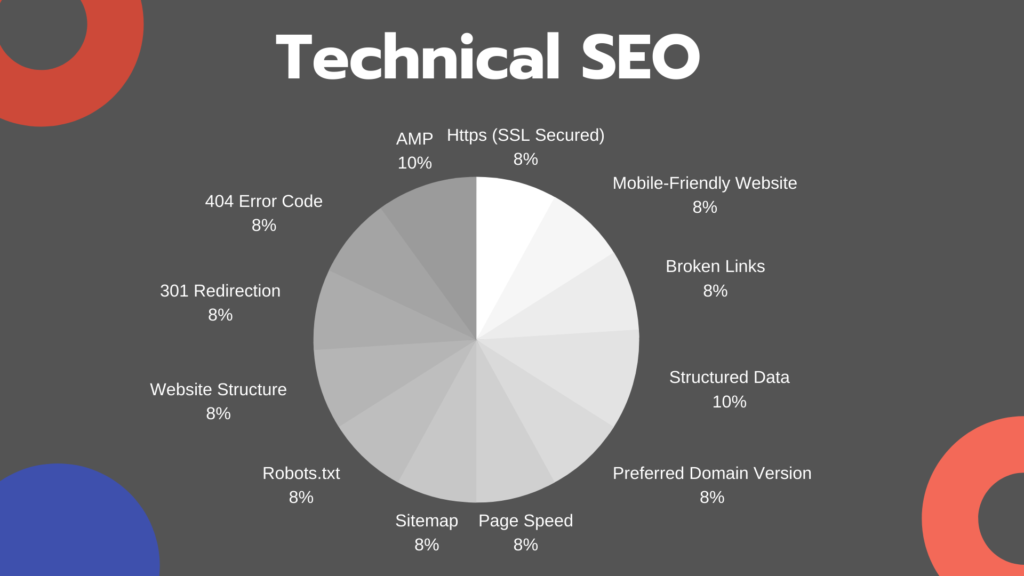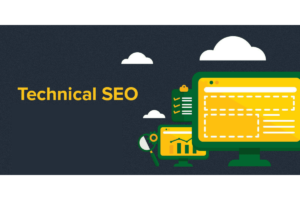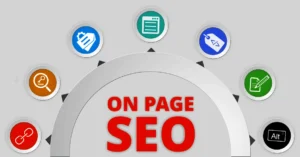Beginner-friendly SEO guide : Boost your online presence and rankings.
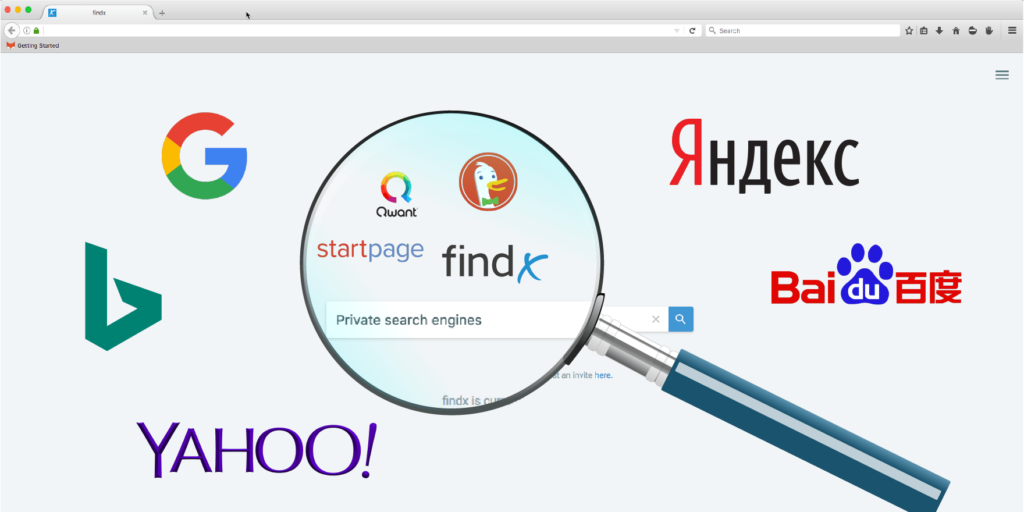
What is a Web Browser ?
A web browser is a software application that allows users to access and navigate the World Wide Web, enabling them to view web pages, multimedia content, and interact with various online services. Commonly mentioned as browsers, these applications serve as the user interface for accessing information on the internet. Popular web browsers include Google Chrome, Mozilla Firefox, Microsoft Edge, Safari, and Opera.
What is a Search Engine ?
A search engine is a powerful tool that allows users to search and find information from the area of the World Wide Web. It works by crawling the web, indexing content, and providing relevant results based on user queries. The primary goal is to connect users with the most accurate and valuable information available online.
What is SEO ( Search Engine Optimization) ?
Search Engine Optimization (SEO) is an essential of digital marketing that aims to enhance a website’s visibility on search engines like Google, Bing, and Yahoo. The primary goal of SEO is to optimize a website’s content, structure, and other elements to ensure that it appears at the top of search engine results pages (SERPs) for relevant queries. By improving a site’s SEO, businesses can attract more organic (non-paid) traffic, increase their online presence, and ultimately drive conversions.
Understanding the Basics of SEO
SEO involves a combination of on-page and off-page strategies. On-page SEO focuses on optimizing elements within a website, such as content, meta tags, and URL structure. Off-page SEO involves external factors, like building high-quality backlinks from reputable websites.

On-Page SEO Elements
a. Title Tags: Title tags are HTML elements that define the title of a web page. They are displayed on search engine results pages (SERPs) as clickable headlines.
- Best Practices:
- Keep titles concise and relevant (around 50-60 characters).
- Incorporate target keywords naturally.
- Create unique titles for each page.
b. Meta Descriptions: Meta descriptions are brief summaries that appear below the title tag on SERPs. While not a direct ranking factor, they influence click-through rates.
- Best Practices:
- Write compelling, informative descriptions (around 150-160 characters).
- Include a call-to-action to encourage clicks.
- Make each meta description unique.
c. Heading Tags (H1, H2, H3, etc.): Heading tags structure the content on a page, providing hierarchy. The H1 tag represents the main heading, followed by H2, H3, and so
on.
- Best Practices:
- Use a single H1 tag for the main title.
- Organize content with relevant H2 and H3 tags.
- Incorporate keywords naturally in headings.
d. URL Structure: A clean and descriptive URL contributes to both user
experience and SEO. It should provide a clear indication of the page’s content.
- Best Practices:
- Keep URLs short and concise.
- Include relevant keywords.
- Use hyphens to separate words.
e. Keyword Optimization: Strategically placing relevant keywords throughout your
content signals to search engines what your page is about.
- Best Practices:
- Integrate target keywords naturally.
- Avoid keyword stuffing (overusing keywords unnaturally).
- Use variations of keywords for a comprehensive approach.
f. Content Quality: High-quality, valuable content is crucial for user engagement and search engine rankings.
- Best Practices:
- Provide informative, well-researched content.
- Use clear and concise language.
- Answer user queries and address their needs.
g. Internal Linking: Internal links connect different pages within your website,distributing authority and guiding users to relevant content.
- Best Practices:
- Link to relevant pages with descriptive anchor text.
- Ensure a logical flow of navigation.
- Use internal links to enhance user experience.
- Best Practices:
- Compress images without compromising quality.
- Use descriptive file names and alt text.
- Specify image dimensions to prevent unnecessary resizing.
- Best Practices:
- Optimize images and multimedia elements.
- Use browser caching.
- Consider Content Delivery Networks (CDNs) for improved speed.
- Best Practices:
- Use responsive design to adapt to various screen sizes.
- Test your website on different devices.
- Prioritize mobile-friendly elements and navigation.
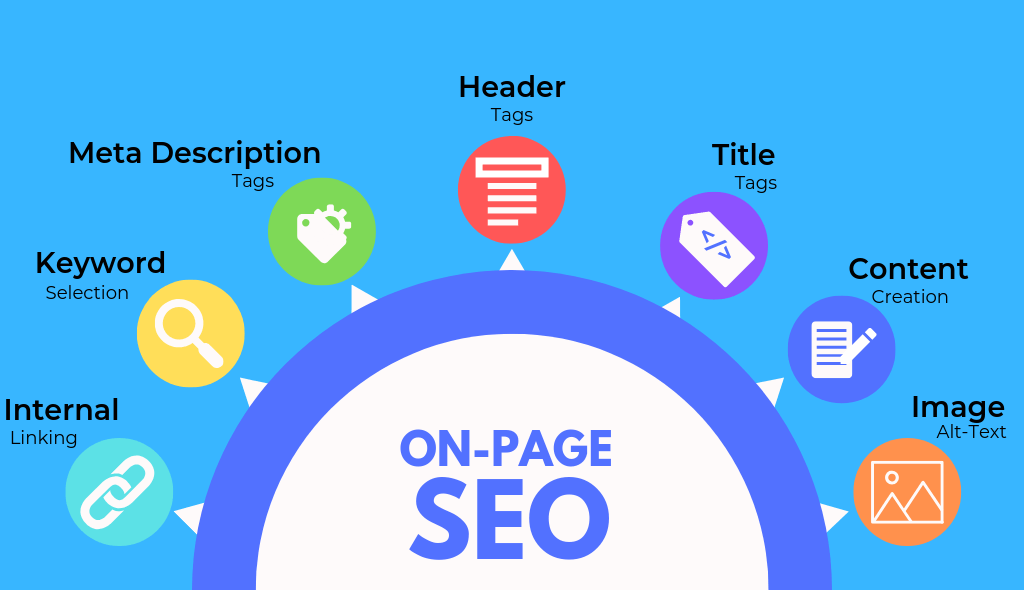
Off-Page SEO
Brief Overview of Off-Page SEO
Off Page, SEO involves optimizing factors outside your website to improve its search engine rankings. This includes building high-quality backlinks, engaging in social media, and creating compelling content.
1. Understanding Off-Page SEO
- Definition and Purpose: OffPage SEO refers to activities performed outside the boundaries of a website to enhance its online visibility. The primary purpose is to improve search engine rankings and attract a broader audience.
- Key Factors Affecting OffPage SEO: Factors like backlinks, social signals, and content quality significantly impact OffPage SEO success. Understanding these factors is crucial for implementing effective strategies.
2. Off-Page SEO Strategies
- Backlink Building: Build high-quality backlinks from reputable sources. Quality over quantity is crucial to avoid penalties from search engines.
- Social Media Engagement: Actively engage on social media platforms to increase your online presence. Share your content, interact with your audience, and participate in relevant discussions.
- Influencer Collaborations: Partnering with influencers in your industry can significantly amplify your OffPage SEO efforts. Their endorsement can bring a new audience to your website.
3. The Role of Blogs and Guest Posts
- Creating Compelling Blog Content: Maintain a blog on your website with regular, high-quality posts. Blogs provide a platform for in-depth discussions and showcase your expertise.
- Benefits of Guest Posting: Guest posting on reputable websites not only builds backlinks but also establishes you as an authority in your field. It widens your reach and brings new visitors to your site.
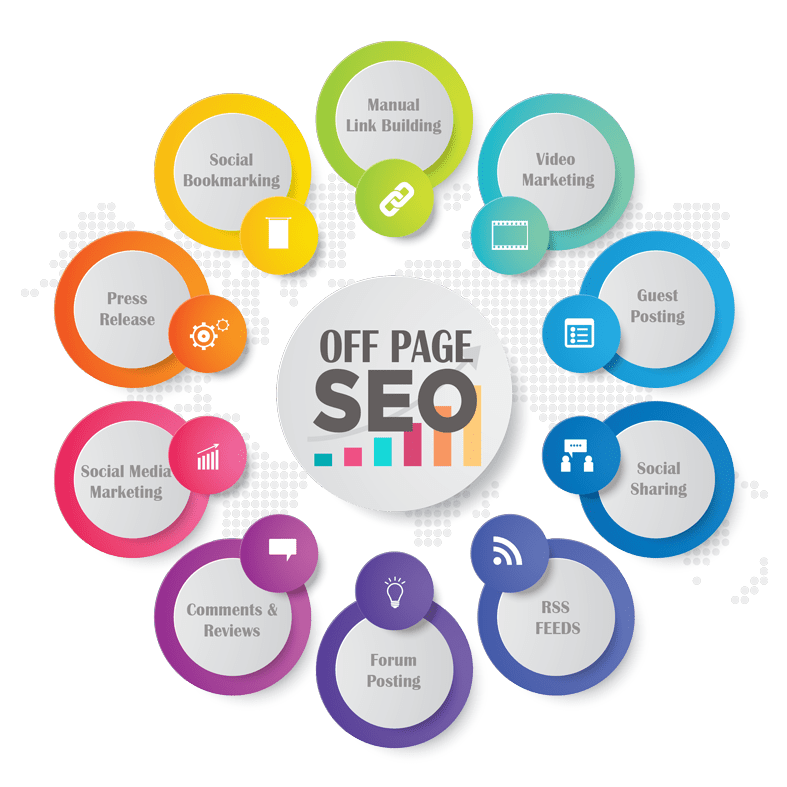
Technical SEO:
- Crawlability:
- Robots.txt: A file that tells search engine bots which pages or sections of a site should not be crawled.
- XML Sitemap: A file that lists all the URLs on a site, helping search engines understand its structure.
- Website Speed:
- Page Speed: Faster-loading pages are favored by search engines. Use tools like Google PageSpeed Insights to identify and address speed issues.
- Mobile Optimization: Ensure your site is optimized for mobile devices to improve user experience and search rankings.
- Mobile-Friendly Design:
- Responsive Design: Ensure your site adjusts its layout based on the user’s device, providing a consistent experience across different screen sizes.
- Site Architecture:
- URL Structure: Use a logical and organized URL structure. Include relevant keywords and make URLs user-friendly.
- Internal Linking: Create a clear internal linking structure to help search engines understand the hierarchy of your content.
- HTTPS:
- SSL Certificate: Use a secure sockets layer (SSL) certificate to encrypt data transmitted between the user and the server. Google gives preference to secure sites.
- Structured Data Markup:
- Schema Markup: Implement schema.org markup to provide additional context to search engines about the content on your pages. This can enhance rich snippets in search results.
- Canonicalization:
- Canonical Tags: Use canonical tags to specify the preferred version of a page, especially if there are duplicate content issues.
- 404 Errors and Redirects:
- Custom 404 Pages: Create a custom 404 page to improve user experience when a page is not found.
- 301 Redirects: Redirect outdated URLs to the most relevant and current pages.
- Technical Audits:
- Regular Audits: Conduct technical SEO audits to identify and fix issues that might affect search engine rankings.
- Google Search Console: Use tools like Google Search Console to monitor and address technical issues reported by search engines.
- Site Speed Optimization:
- Image Compression: Compress images to reduce file size without compromising quality.
- Minification: Minify CSS, JavaScript, and HTML files to reduce page load times.
